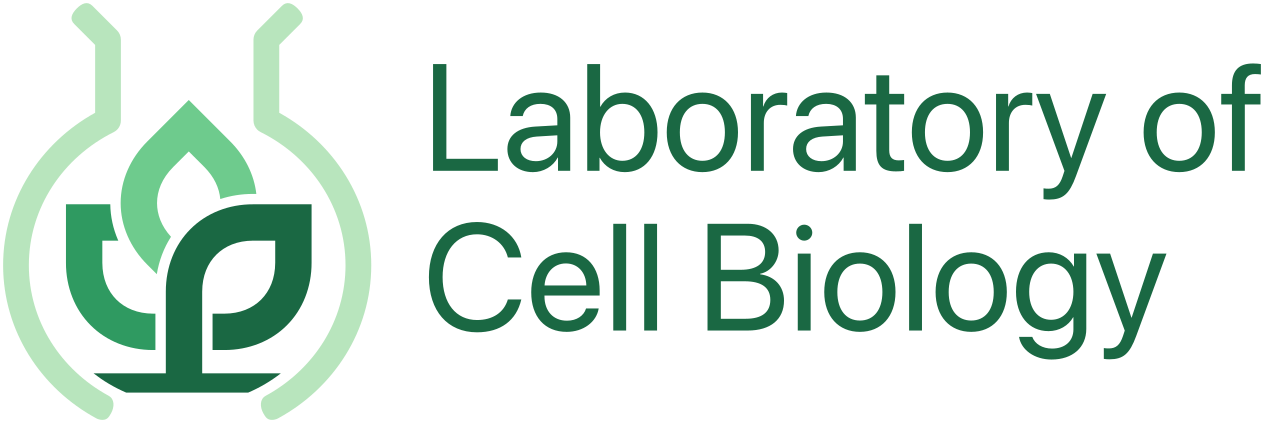In this large collaborative study, several teams converged to unravel the role AtEH1/2 proteins, which is the essential subunit of the plant-specific endocytic adaptor protein complex TPC. Our team focused on the lipid-driven biomolecular condensation of the EH1/2 proteins. Using tobacco pollen tubes and leaf epidermal cells as model system, our team showed that EH1/2 condensates specifically nucleate on the plasma membrane through interactions with anionic phospholipids, and facilitate the dynamic recruitment and assembly of clathrin, early-, and late-stage endocytic accessory proteins. Importantly, this condensation also promotes ordered clathrin assemblies.
New paper on the functional diversification of exocyst subunits published in Plant Journal
The exocyst complex is an octameric evolutionarily conserved tethering complex engaged in the regulation of polarized secretion in eukaryotic cells. In this paper, we focused on systematic comparison of two isoforms of the SEC15 exocyst subunit, SEC15a and SEC15b. We have documented that both isoforms are parts of the exocyst complex and play dominant roles in the exocyst-dependent secretion in the male gametophyte or sporophyte, respectively.
New paper describing the trafficking of the PR1 protein published in Molecular Plant Pathology
The pathogenesis-related 1 (PR1) protein is frequently used for biotic stress monitoring in plants. Until now, the molecular mechanisms of its cellular processing, localization, and function were still unknown. In this work, we performed a comparative analysis of localization, trafficking, proteolysis, and immunity effects of A. thaliana PR1 and its truncated/mutated variants.
Vedrana's paper on EXO70A2 in Arabidopsis pollen is on the cover of Plant Physiology
The recent paper from the lab with our PhD student Vedrana Marković as the first author made it to the cover of Plant Physiology!
Marković V., Cvrčková F., Potocký M., Kulich I., Pejchar P., Kollárová E., Synek L., Žárský V. (2020) EXO70A2 is critical for exocyst complex function in pollen development Plant Physiology 184(4): 1823-1839 doi:10.1104/pp.19.01340
The long-awaited paper on the architecture of endocytic TPLATE complex is published in Science Advances!
Klaas Yperman*, Jie Wang*, Dominique Eeckhout, Joanna Winkler, Lam Dai Vu, Michael Vandorpe, Peter Grones, Evelien Mylle, Michael Kraus, Romain Merceron, Jonah Nolf, Eliana Mor, Pieter De Bruyn, Remy Loris, Martin Potocký, Savvas N. Savvides, Bert De Rybel, Geert De Jaeger, Daniël Van Damme and Roman Pleskot (2021). Molecular architecture of the endocytic TPLATE complex. Science Advances. DOI: 10.1126/sciadv.abe7999.
This paper is an outcome of the extensive collaboration - five groups from VIB Ghent and our lab, which contributed the lipid-binding assays. We are super proud of Roman Pleskot, who worked on this project both in Ghent (as a postdoc in Daniel’s Van Damme lab) and here in Prague and is one of the corresponding authors!
New paper on moss exocyst in press
SEC6 exocyst subunit contributes to 3D growth and development of Physcomitrium patens
Lucie Brejšková, Michal Hála, Anamika Rawat, Hana Soukupová, Fatima Cvrčková, Florence Charlot, Fabien Nogué, Samuel Haluška and Viktor Žárský*
Plant Journal 2021 in press
New paper on plasma membrane lipid domains
Arabidopsis Trichome Contains Two Plasma Membrane Domains with Different Lipid Compositions Which Attract Distinct EXO70 Subunits
by Zdeňka Kubátová ,Přemysl Pejchar ,Martin Potocký ,Juraj Sekereš ,Viktor Žárský and Ivan Kulich
Int. J. Mol. Sci. 2019, 20(15), 3803; https://doi.org/10.3390/ijms20153803







